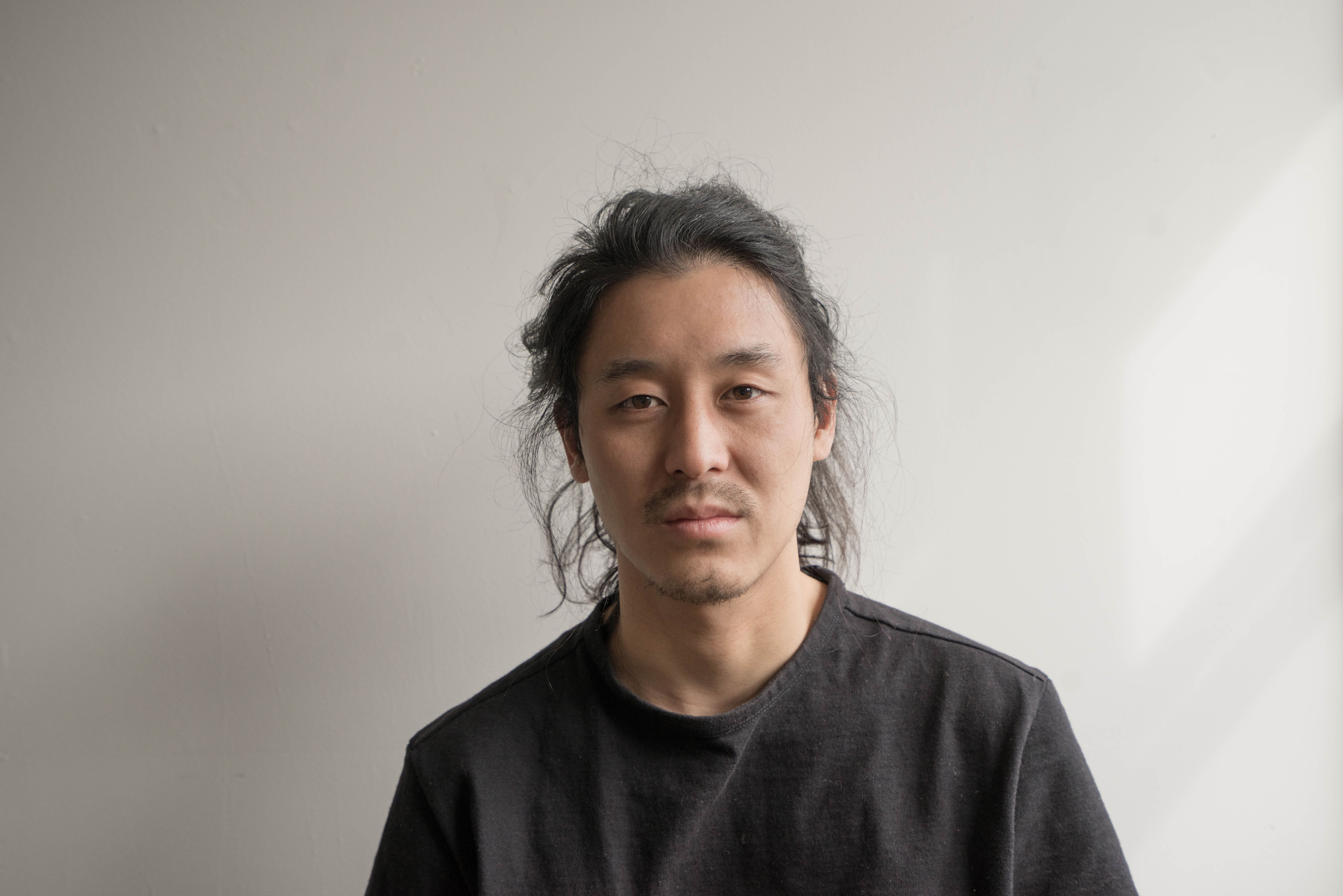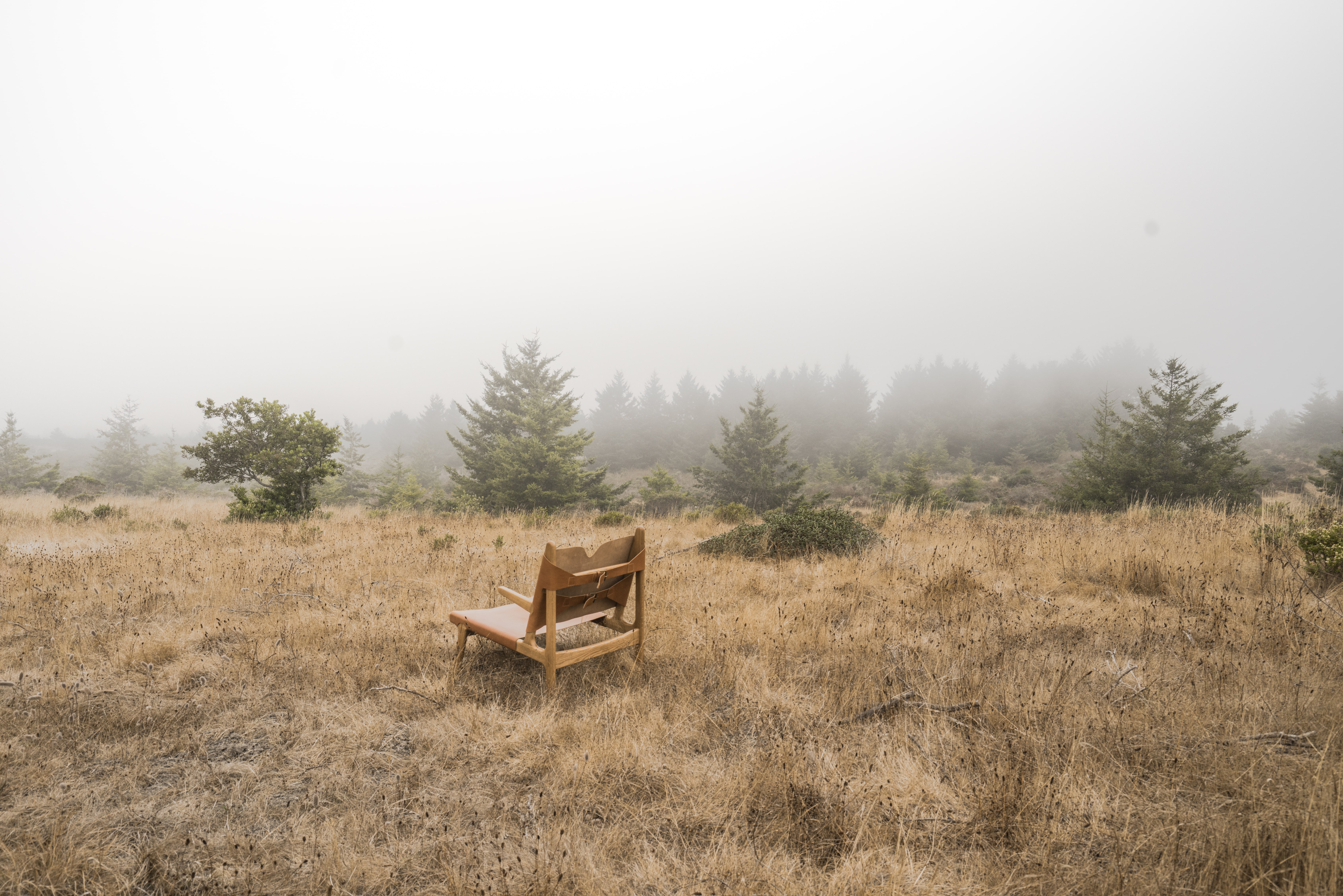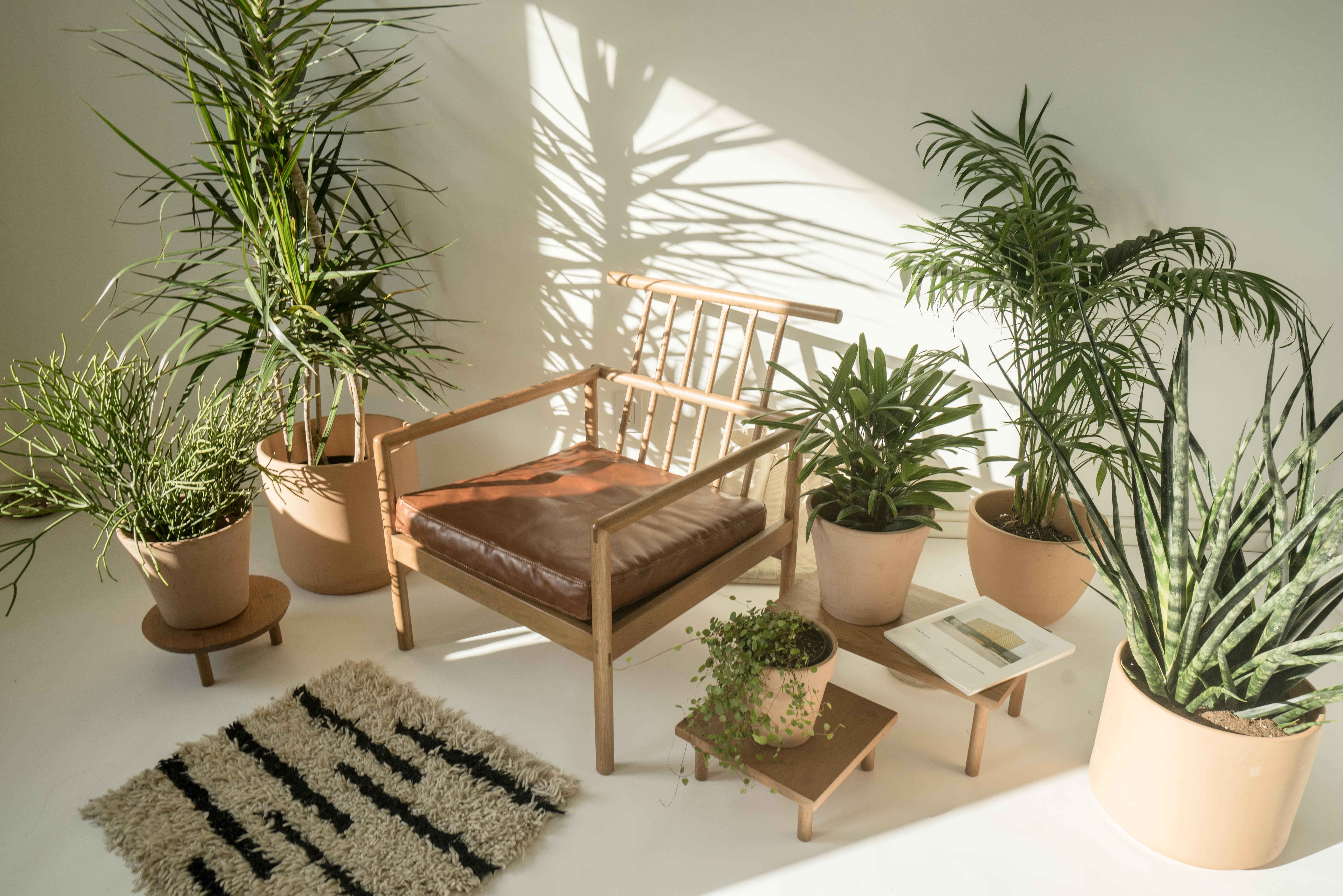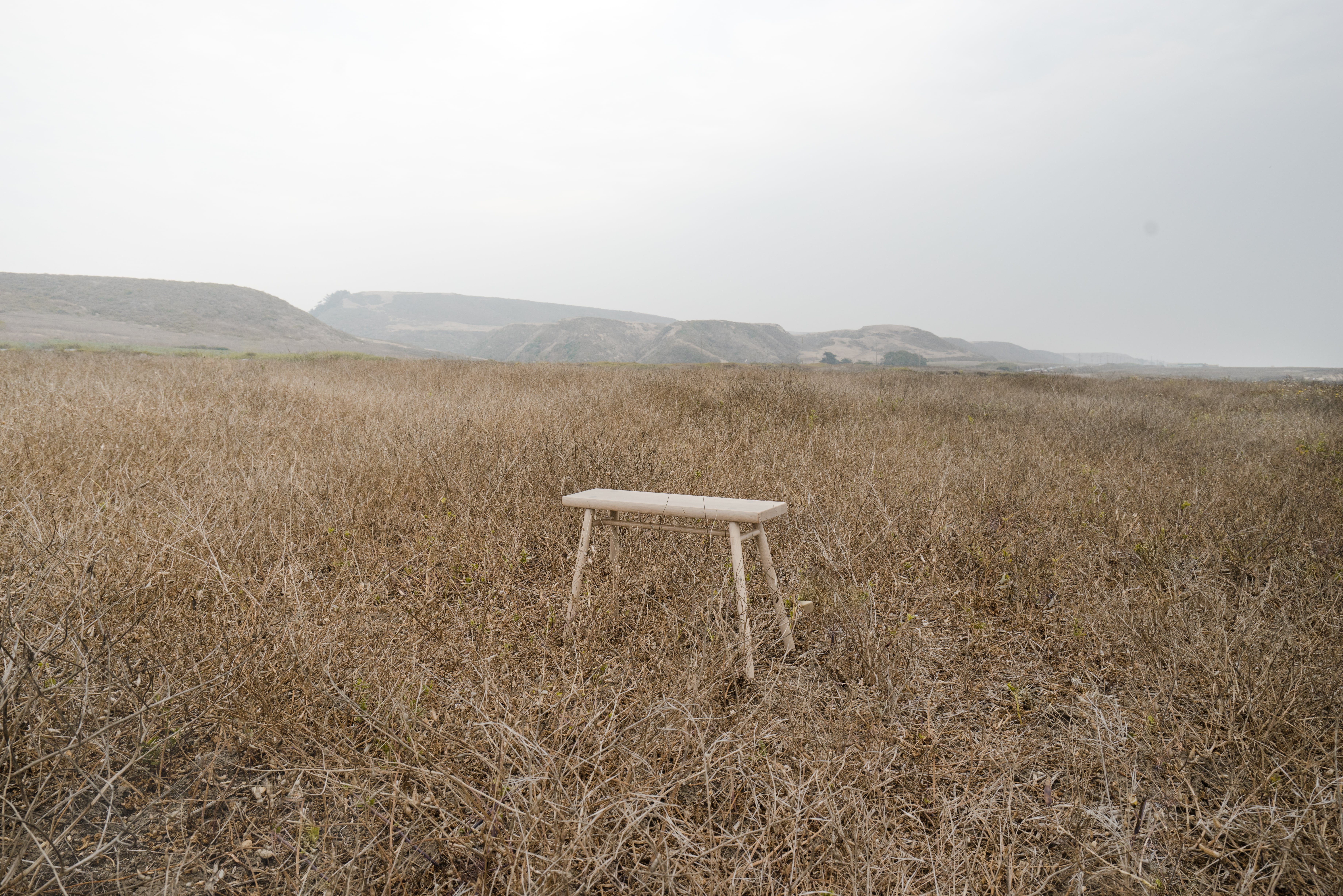Interview
THE SUN SETS AT SIX: A CONVERSATION WITH ANTARES YEE
By Hélène Tran
Photos courtesy of Sun at Six
October 28th, 2020
 Antares Yee
Antares Yee
I first met Antares Yee, the creative director at Sun at Six, in the summer of 2018 in New York City, after the then 27-year old launched his studio’s second collection of furniture. Sun at Six, Antares’s furniture design studio in Brooklyn, is a joint venture between a mother and son. The home furnishings are made of Italian leather and sustainably sourced white oak, and are assembled with the care of traditional Chinese joinery masters. This technique is called sun mao (榫卯)—a fading artform that is known and practiced by few. All pieces from their collection are developed in close collaboration with craftsmen in Guangzhou, China. The premise of the studio centres around the way design and space can impact how you feel, specifically the emotional impact and influence of context and design intent.
That same year, President Donald Trump began what is now the China-United States Trade War—imposing tariffs and trade barriers on China. Citing unfair trading practices, the new tariffs were claimed to encourage the consumption of American-made goods by making imports more costly. Despite this, many homegrown businesses like Sun at Six either manufacture or partially run production overseas and suffer as a result. Tariff policy changes were also felt in Mexico and Canada this summer with the implementation of the new iteration of NAFTA, titled the Canada-United States-Mexico Agreement (CUSMA).
Fast forward two years, Sun at Six is carried at Design Within Reach, A/D/O, and furnishes the Glossier HQ, while the US approaches a monumental presidential election. As a business owner in the US working with craftsmen in China, there exists no separation between art and politics. Over video, some 400 miles between my Toronto apartment and his Brooklyn home, Antares and I chat about the influence of his Chinese heritage on the furniture design studio, the relationship between space, design, and the mind, and the balancing act of being in business in today’s climate.
That same year, President Donald Trump began what is now the China-United States Trade War—imposing tariffs and trade barriers on China. Citing unfair trading practices, the new tariffs were claimed to encourage the consumption of American-made goods by making imports more costly. Despite this, many homegrown businesses like Sun at Six either manufacture or partially run production overseas and suffer as a result. Tariff policy changes were also felt in Mexico and Canada this summer with the implementation of the new iteration of NAFTA, titled the Canada-United States-Mexico Agreement (CUSMA).
Fast forward two years, Sun at Six is carried at Design Within Reach, A/D/O, and furnishes the Glossier HQ, while the US approaches a monumental presidential election. As a business owner in the US working with craftsmen in China, there exists no separation between art and politics. Over video, some 400 miles between my Toronto apartment and his Brooklyn home, Antares and I chat about the influence of his Chinese heritage on the furniture design studio, the relationship between space, design, and the mind, and the balancing act of being in business in today’s climate.
 Furniture from Sun at Six
Furniture from Sun at Six
01/ You were born and raised in Santa Cruz, California, where your mother and father own an established furniture company. How did that shape who you’ve become?
My mom runs the furniture company and my dad technically works for her. Growing up in that world, I thought furniture was lame and boring. I spent most of my childhood in warehouses climbing on boxes and in furniture stores with my eyes glazed over. At that point, I saw furniture as functional; a place to eat dinner. It was like a doorknob—you just use it to open a door. It wasn’t like how we conceive of art objects today. I didn’t connect furniture to being a creative endeavour until I was in my early twenties. That said, my upbringing showed me the gritty, scrappy nature of running a small business—the mentality and sacrifice required, which I now realize not everyone was exposed to.
02/ When and how did you realize that design would also be your career?
I realized in college I wanted to become a designer. It was the closest job available to me related to visual culture. Visual culture always spoke to me and I think, even in art, I was really just driven by it and nothing else. However, I never had much to say beyond finding a personally gratifying way to react to contemporary visual culture in my work. It wasn’t clear to me exactly what I wanted to do, and coming from an immigrant background, I really had no idea what the design world was like or that a design world even existed. At that time, I saw that jobs as a digital designer existed and that was a better lead than anything else. I honestly had no idea other design professions were even available to me.
I helped my mom design furniture and would look over her work, but it wasn’t until the last 5 or 6 years that the idea of art/object became sexy or that I saw objects as expressions of design sensibility. Coming to New York also expanded my vision of design and possibilities — furniture became a canvas to design something with. Having worked in digital design, I wanted to get out of the digital world and into the physical, experiential world. I wanted to cut my teeth and prove myself. With the background and expertise of my family, furniture design felt like the perfect place to do my own thing.
My mom runs the furniture company and my dad technically works for her. Growing up in that world, I thought furniture was lame and boring. I spent most of my childhood in warehouses climbing on boxes and in furniture stores with my eyes glazed over. At that point, I saw furniture as functional; a place to eat dinner. It was like a doorknob—you just use it to open a door. It wasn’t like how we conceive of art objects today. I didn’t connect furniture to being a creative endeavour until I was in my early twenties. That said, my upbringing showed me the gritty, scrappy nature of running a small business—the mentality and sacrifice required, which I now realize not everyone was exposed to.
02/ When and how did you realize that design would also be your career?
I realized in college I wanted to become a designer. It was the closest job available to me related to visual culture. Visual culture always spoke to me and I think, even in art, I was really just driven by it and nothing else. However, I never had much to say beyond finding a personally gratifying way to react to contemporary visual culture in my work. It wasn’t clear to me exactly what I wanted to do, and coming from an immigrant background, I really had no idea what the design world was like or that a design world even existed. At that time, I saw that jobs as a digital designer existed and that was a better lead than anything else. I honestly had no idea other design professions were even available to me.
I helped my mom design furniture and would look over her work, but it wasn’t until the last 5 or 6 years that the idea of art/object became sexy or that I saw objects as expressions of design sensibility. Coming to New York also expanded my vision of design and possibilities — furniture became a canvas to design something with. Having worked in digital design, I wanted to get out of the digital world and into the physical, experiential world. I wanted to cut my teeth and prove myself. With the background and expertise of my family, furniture design felt like the perfect place to do my own thing.
03/ In 2017, you founded Sun at Six with your mother. Tell me about venturing into business with family.
It was stressful. I’ve seen all the impositions this makes on family relationships by seeing my mom and dad work together and I really wanted no part of that. I assumed that if we created Sun at Six completely separate from her business and I ran it as a separate entity, it would make things easier. This is true, and I think Sun at Six succeeded because its perspective is from a different generation immersed in a different culture. That said, the stresses and challenges of working with family were more present than I expected. It’s not easy and you’re constantly fighting battles every day. I learnt to pick my battles.
It was stressful. I’ve seen all the impositions this makes on family relationships by seeing my mom and dad work together and I really wanted no part of that. I assumed that if we created Sun at Six completely separate from her business and I ran it as a separate entity, it would make things easier. This is true, and I think Sun at Six succeeded because its perspective is from a different generation immersed in a different culture. That said, the stresses and challenges of working with family were more present than I expected. It’s not easy and you’re constantly fighting battles every day. I learnt to pick my battles.
“The more that Americans viscerally see Chinese people — faces, families, favorite foods, walking in the park on Saturday morning — the better our odds are of fighting the political narrative we see in the media of “China” being some unknown, hostile trade adversary.”
04/ The artisans of the collection are rooted in Guangzhou, China and use a traditional Chinese joinery technique that is fading. What motivated you to preserve this craftsmanship?
It comes from the “Made in China” stereotypes and Chinese stereotypes in the United States. China has such a rich history of intricate craft — in direct contrast to Japan’s minimalism. China has always been known for its incredible intricacy and complexity in design. There are thousands of years of expertise and craft, passed from generation to generation, and Chinese joinery is one such example. It was Chinese joinery systems that inspired Japanese joinery.
Especially in the face of today’s political climate and racism that Chinese people face in the United States, it’s particularly important to push these artforms and highlight the humanity of individual people that not everyone has had a chance to interact with personally. It’s a lot easier for an American to empathize with an Australian on the other side of the world, who speaks the same language and is more culturally accessible than a Chinese speaker in a country whom we have little cultural access to. The language and cultural barriers make it easy for hawks and politicians to push convenient narratives without repercussions. The more that Americans viscerally see Chinese people—faces, families, favourite foods, walking in the park on Saturday morning—the better our odds are of fighting the political narrative we see in the media of “China” being some unknown, hostile trade adversary.
It comes from the “Made in China” stereotypes and Chinese stereotypes in the United States. China has such a rich history of intricate craft — in direct contrast to Japan’s minimalism. China has always been known for its incredible intricacy and complexity in design. There are thousands of years of expertise and craft, passed from generation to generation, and Chinese joinery is one such example. It was Chinese joinery systems that inspired Japanese joinery.
Especially in the face of today’s political climate and racism that Chinese people face in the United States, it’s particularly important to push these artforms and highlight the humanity of individual people that not everyone has had a chance to interact with personally. It’s a lot easier for an American to empathize with an Australian on the other side of the world, who speaks the same language and is more culturally accessible than a Chinese speaker in a country whom we have little cultural access to. The language and cultural barriers make it easy for hawks and politicians to push convenient narratives without repercussions. The more that Americans viscerally see Chinese people—faces, families, favourite foods, walking in the park on Saturday morning—the better our odds are of fighting the political narrative we see in the media of “China” being some unknown, hostile trade adversary.
 Furniture from Sun at Six
Furniture from Sun at Six
05/ The premise of Sun at Six is around the concept of design and spaces enabling the mind. Why is that manifesto at the core of your business?
Every space has a purpose, whether we’re aware of it or not. Some people arrange living rooms for lounging, others to focus and do work. For us, the key to making sure a room succeeds is how you feel when using it. If you want to work in your living room, you better make sure the design choices you make facilitate focus. To that end, we think about how our pieces make you feel and how they can help put you in the right mindset — for sleep, relaxation, focus, etc. We focus on how your furniture makes you feel in that specific space while making sure it aligns with the mindset you want. We aim to evoke feelings of gentleness, calm, and nourishment in every piece we design. A lot of our cues are taken from nature to expand your senses: smell, sight, touch.
06/ What are some of the challenges or fears you’ve had to overcome with Sun at Six?
With a small studio, you face a new challenge every day. At first it was, “Who is even going to buy one of these things?” There was a lot of doubt. Why would anyone buy one of our pieces when there are so many options out there? Once the initial pieces sold, the joy was immediately replaced by the next challenge: how do we make enough money to sustain ourselves? Then we faced larger questions like how do we deal with Trump’s tariffs? How do we deal with complex shipping logistics? How do we deal with a pandemic? It’s a new curve ball every day. It feels like everytime you take a step forward, a new problem gets thrown at you—rinse and repeat. It keeps things fresh, but it can be a lot to deal with. You don’t really get a break.
Every space has a purpose, whether we’re aware of it or not. Some people arrange living rooms for lounging, others to focus and do work. For us, the key to making sure a room succeeds is how you feel when using it. If you want to work in your living room, you better make sure the design choices you make facilitate focus. To that end, we think about how our pieces make you feel and how they can help put you in the right mindset — for sleep, relaxation, focus, etc. We focus on how your furniture makes you feel in that specific space while making sure it aligns with the mindset you want. We aim to evoke feelings of gentleness, calm, and nourishment in every piece we design. A lot of our cues are taken from nature to expand your senses: smell, sight, touch.
06/ What are some of the challenges or fears you’ve had to overcome with Sun at Six?
With a small studio, you face a new challenge every day. At first it was, “Who is even going to buy one of these things?” There was a lot of doubt. Why would anyone buy one of our pieces when there are so many options out there? Once the initial pieces sold, the joy was immediately replaced by the next challenge: how do we make enough money to sustain ourselves? Then we faced larger questions like how do we deal with Trump’s tariffs? How do we deal with complex shipping logistics? How do we deal with a pandemic? It’s a new curve ball every day. It feels like everytime you take a step forward, a new problem gets thrown at you—rinse and repeat. It keeps things fresh, but it can be a lot to deal with. You don’t really get a break.
“If you go about your business and pretend you’re separating politics from craft, you’re actively supporting the existing structures and systems put in place, and supporting those with power now.”
07/ It feels as though time has paused in the past six months. How have the recent events influenced the way you think, act, and/or live?
It’s profoundly affected my thoughts about my own goals on how I relate to society, my place in this society, and what I want from my life. What even is the value of high-end furniture design given the circumstances with COVID, racial justice, and income inequality? How does what I do relate to these circumstances? It’s hard to know what direction to take the studio, what its role is, and what my own role is.
Despite this, current events have pushed people to think about where they buy and who they buy from. Consumers are now more open to sustainability and helping small businesses. Leaders are pushed to think of their impact on capitalism and use their platform or resources to create positive change. There is a collective effort to mobilize your thoughts, efforts, and money into something positive.
It’s profoundly affected my thoughts about my own goals on how I relate to society, my place in this society, and what I want from my life. What even is the value of high-end furniture design given the circumstances with COVID, racial justice, and income inequality? How does what I do relate to these circumstances? It’s hard to know what direction to take the studio, what its role is, and what my own role is.
Despite this, current events have pushed people to think about where they buy and who they buy from. Consumers are now more open to sustainability and helping small businesses. Leaders are pushed to think of their impact on capitalism and use their platform or resources to create positive change. There is a collective effort to mobilize your thoughts, efforts, and money into something positive.
08/ As a business owner and creative, do you believe in the separation of politics from craft?
Every act is political. To be “apolitical” is to take a political stance in support of the status quo. If you go about your business and pretend you’re separating politics from craft, you’re actively supporting the existing structures and systems put in place, and supporting those with power now.
09/ Lately, where have you drawn inspiration from and what do you enjoy most about the creative process?
Lately, I’ve been thinking about our photography. We just shot in the same place along the Pacific Coast in California that we shoot every year, but this year huge swaths were engulfed by flames. Thinking about how to represent the charred landscape and the devastating fires has opened some new doors in terms of photography and messaging.
As far as the creative process, the most exciting part for me is when you’re about to see the final result — the first time you see a finished chair, an edited photo. My stomach usually drops in the moments leading up. Most often I’m disappointed, but there’s nothing like seeing results that you’re proud of. When the results exceed my expectations, those are some of the best moments for sure.
Every act is political. To be “apolitical” is to take a political stance in support of the status quo. If you go about your business and pretend you’re separating politics from craft, you’re actively supporting the existing structures and systems put in place, and supporting those with power now.
09/ Lately, where have you drawn inspiration from and what do you enjoy most about the creative process?
Lately, I’ve been thinking about our photography. We just shot in the same place along the Pacific Coast in California that we shoot every year, but this year huge swaths were engulfed by flames. Thinking about how to represent the charred landscape and the devastating fires has opened some new doors in terms of photography and messaging.
As far as the creative process, the most exciting part for me is when you’re about to see the final result — the first time you see a finished chair, an edited photo. My stomach usually drops in the moments leading up. Most often I’m disappointed, but there’s nothing like seeing results that you’re proud of. When the results exceed my expectations, those are some of the best moments for sure.
 Shot on the meadows around the Pacific Coast highway in Northern California pre-fire. The team shoots at the same area every year.
Shot on the meadows around the Pacific Coast highway in Northern California pre-fire. The team shoots at the same area every year.

Unedited photo taken in this past September after the fires. The smog and yellowish tint are all from fires.
The entire collection of Sun at Six can be purchased online here.
ABOUT THE AUTHOR
Hélène Tran is a Montréalaise currently residing in Toronto, Canada. She is an enthusiast of orange wine, fashion, and all things retail. She is also the Volume Project Manager at Sticky Rice Magazine.








